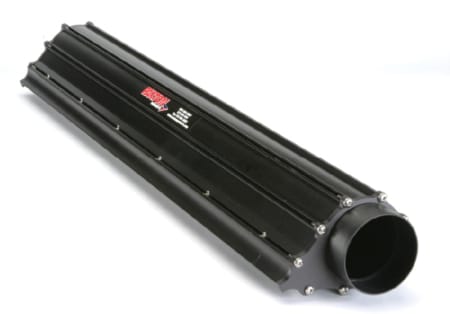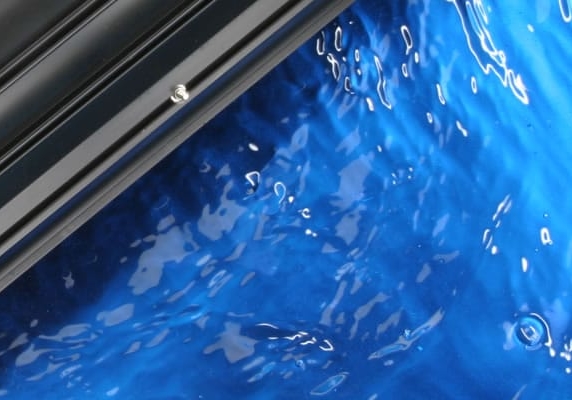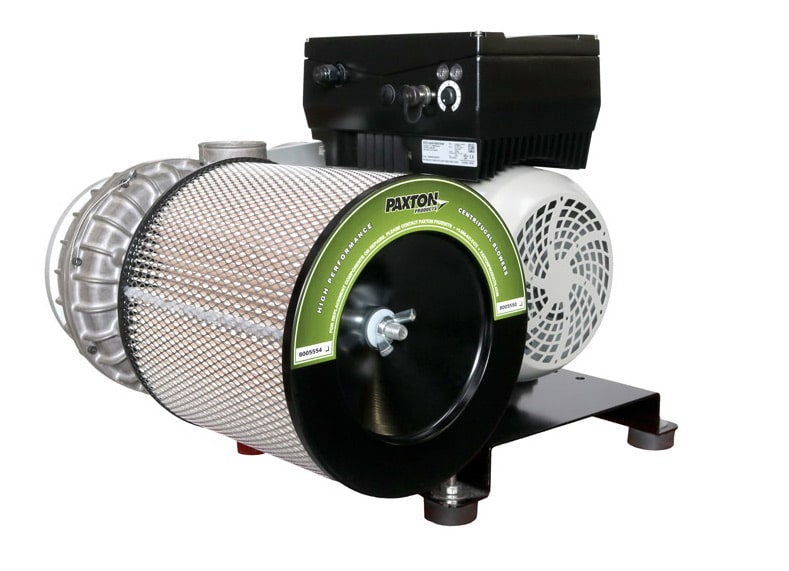Air Knives have been used in manufacturing since the 1950s. Before this, heat lamps had been used to remove water particles from objects on production lines. This method was only found to be partially effective, as it was not able to remove solid phase residue, and required a great deal of time and space to operate. In contrast, the early Air Knives - usually known as Air Doctors - were found to be very effective at not only debris blow-off, but also in regulating the thickness of liquids, meaning they were very useful to production lines in the printing and textile industries.
Air Knives have an innovative design that creates laminar air flow. Air flow created from a fan, for example, hits the air making it turbulent and the particles erratic and irregular. In contrast, air flow created from an Air Knife is smooth and uniform, making it perfect for cleaning, drying and protecting objects. Before the 1950s air streams were not usually incorporated into cleaning systems. However, in response to a call for a new way to ensure sterile labs focussing on nuclear research, Willis Whitfield invented the laminar-flow cleanroom in 1959. This system produced an effect that was 1000 times cleaner than anything that had been produced to date, and within a few years $50billion worth of laminar-flow cleanrooms were being built worldwide.

Air Knife Systems use a precision-engineered linear slot to direct and utilise high velocity air from a centrifugal blower.
The work of Willis Whitfield had built on research investigating the phenomenon of air flow. Since The early 1900s work into flight had identified that air, when directed, forms different layers – laminar and turbulent. Laminar flow, for example, is the boundary layer of air that flows over an aeroplane's wing. This boundary layer is notable because it forms a thin, smooth sheet of air that actually adheres to the wing because of its viscosity. However, as laminar airflow breaks away from the wing a separation in airflow occurs, and the laminar boundary layer becomes a turbulent boundary layer. This separation increases drag and raises fuel consumption. NASA has therefore, unsurprisingly, described the quest to maximise the amount of laminar flow and minimise the amount of turbulent flow on an aircraft's wing as the holy grail of aerodynamics!
In his work on flight, Coandă demonstrated in 1910 that a fluid jet has the tendency to stay attached to a convex surface. This resulted, for example, in the introduction of flaps on wings to make the air moving over it bend, resulting in aerodynamic lift. It is this phenomenon that enables a laminar air flow to follow the lines of an object, in effect creating a barrier that does not mix with other airflows, therefore preventing airborne contamination to pass through it.
Air Knives are amazingly versatile and are used for a wide variety of applications in manufacturing, such as:

The potential applications for laminar air flow in manufacturing were increasingly realised across the 1960s and 1970s. Air Knives moved away from their Air Doctor origins, and main function as a tool for blowing off debris, and were increasingly used for cleaning and cooling objects as well. The unique shape of the Air Knife - two blades joined like a knife edge - were developed to create the conditions where air, adhering to the knife surface, creates a laminar flow following the Coandă effect, therefore making Air Knives a powerful and targeted tool for manufacturers to use.
Industrial Air Knives were enhanced with the inclusion of plenum chambers - pressurised containers that house gas or fluids at a positive pressure, higher than the surroundings, expelling these gas or fluids through holes or slots as required. The origins of the plenum chamber were an engineering innovation. The interest in travel and expansion during the Victorian period had not only focussing on potential flight, but also caused a number of inventors to ponder the problem of the density of water, and so the power needed to propel vehicles through it. The idea of having a container of air that separated ships from the water, was ingenious. The first hovercraft was trialed in 1915, powered by a 48kW pump and two 89kW engines – it achieved over 32 knots! Now, the largest hovercrafts are around 57m with a full load displacement of 1.17million lbs – and they can achieve 55 knots.
The introduction of plenum chambers in Air Knives came in parallel with innovations in blowers in the 1970s. Paxton Products in the USA developed their blowers for industrial applications in response to the oil crisis in 1973 when crude oil prices dramatically rose. An embargo was placed by OPEC (Organisation of Arab Petroleum Exporting Countries) from October 1973 to March 1974. During this time, crude oil prices rose dramatically from $2.90 to $11.65 per barrel, forcing a re-think for improved efficiencies in fuel consumption. (source: www.thebalance.com/opec-oil-embargo K Amadeo). With this challenge, Paxton Products developed the turbo blower for industrial applications. Originally built for the automotive industry, turbo blowers enhanced engine performance and became a regular feature in car engines in Daytona racing trials from 1957.
Blowers are machines used in manufacturing that provide a large flow of air or gas through rotating blades that are powered by a motor. Unlike fans, in blowers the resistance to the air flow is primarily on the downstream side of the fan.

Widespread Air Knife system usage skyrocketed in the 1990s as a result of research into climate change. The historic 1987 Montreal Protocol made environmentally responsible techniques in manufacturing mandatory, when around 200 countries agreed to phase out CFCs and other volatile organic compounds found in cleaning and coating agents. Emerging industries, such as computing, realised that they needed an alternative to Freon for cleaning boards for example, and it did not take long for engineers to realise Air Knife Systems could dry as good or better than a compressed air system that needed 100 times more power.
Today, Air Knife Systems are highly optimised to ensure maximum effectiveness at minimum running costs. Often, the system blower is coupled with a Variable Frequency Drive (VFD) unit. VFDs provide users with maximum control of the energy usage, based on their particular production rates and specific package sizes.
The adaptability of modern Air Knife Systems is remarkable, and they can be a valuable addition to virtually any production line, minimizing energy usage and achieving better results than competitor systems.
We are currently offering free of charge consultations.
Our team of specialists will contact you within 24 hours to discuss your requirements and arrange your full in-depth consultation free of charge.
Call 01473 320 307 or click below to request your free consultation.